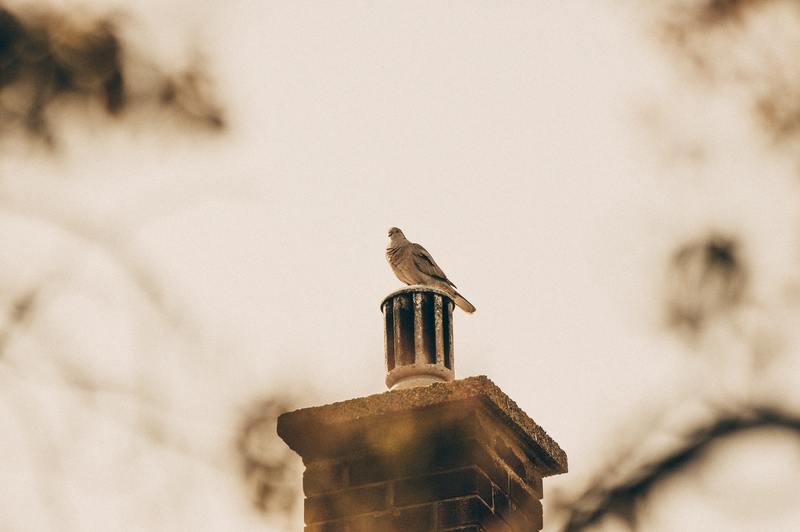If you notice a damp odor coming out of your chimney, then you might want to learn how to remove mildew from chimney. However, take note that you’ll do more than just scrubbing because you also have to address the source of the problem first.
All homeowners have heard one or two horror stories about the effects of mold and mildew growth in a home. Although these narratives probably sound exaggerated, some of them are true and can happen to anyone at any time.

Even though mildew is not as damaging as mold, you must remove it as soon as you suspect one from growing. Please keep reading to know how to remove mildew growth from your chimneys and what causes it in the first place.
What Causes Mildew Growth In Chimneys?
1. Lack of proper ventilation
The most common cause of mildew growth is poor ventilation. If there’s no airflow to carry any moisture out of the chimney, it will be trapped inside and cause condensation.
This process happens when warm and humid air meets the chimney’s cold surface. It will convert the moist air to its liquid state, which will look as if the chimney is sweating.
2. Damaged chimney crown
The chimney crown helps cover any cracks at the top to prevent water from making its way inside the house. So when you suspect mildew growth on your chimney, then you should probably check the crown and see if it’s broken or damaged.
When the conditions are right, mildew can thrive in any environment. It will only take one crack to feed the mildew.
3. Non-waterproofed bricks and mortar
Another cause for mildew has non-waterproofed bricks and mortar. It can cause water and moist air to seep through and rest on your chimney walls.
Now that the chimney has moisture inside, it’s only a matter of time before mildew comes in. Here’s a guide on how long does it take for mildew to grow for more information.
Easy Steps On Cleaning Mildew Off Your Chimney
Step #1. Fix the water source immediately
Once you confirm that you have a mildew growth on your chimney, the first thing you have to do is to look for what might be causing it in the first place.
Fixing the source of the problem will prevent any situations like this from happening again in the future. Mildew can’t grow without water, so cutting off its water source will save you money and headaches from dealing with it.
While you’re at it, this can also be the time to clean the area. Check out this article on how to clean a wood stove chimney from the bottom up for helpful tips.
Step #2. Prepare your cleaning solution
The next step to do is to mix your cleaning solution. There are a couple of solutions that you can do, depending on what’s available in your home.
In a bucket, combine ¼ cup of bleach with a quarter of water. As a substitute, you could also mix detergent and a little bit of ammonia in warm water.
Take note that you should avoid mixing bleach and ammonia. It creates a toxic gas that can be dangerous to your health.
Step #3. Apply and scrub the affected area
After that, carefully pour your cleaning solution into a spray bottle using a funnel. Don’t forget to wear protective equipment to prevent any spores from getting inside your body.
Let the solution sit for up to five minutes. It will allow the solution to penetrate the mildew and prevent it from multiplying.
Then, scrub the area using a stiff-bristled brush. You may use a long-handled one for hard-to-reach areas.
Step #4. Rinse with warm water
Do you know that warm water is an efficient cleaning agent? When you’re done scrubbing the affected areas, rinse everything down with warm and clean water.
It may also help if you try to scrub some more while you’re at it to make sure that all mildew spores are gone. You may also find some dirt and soot on top of your mildew problem while you’re doing this.
Step #5. Make an appointment with the professionals
Once you’re rinsing, inspect your chimney and see if you’ve gotten everything out. If you think there are still some residues, feel free to repeat steps 1 to 4 as much as your chimney needs.
You may also arrange an appointment with a professional chimney sweep for a check-up. Sometimes, hiring an expert can save you more money than doing it yourself.
This post on what to expect before hiring a chimney sweep may help you pick an excellent company to help you during this time.
Conclusion
Now that you know how to remove mildew from chimney, you should probably get up and do it as soon as you can. As mentioned earlier, exposure to this fungus can cause potential health issues and cause stale odor around the house.
Once you’ve decided when to do it, we recommend you not to do it alone. It would be best to have an assistant to help you with anything and look out for you just in case something happens.
You should also make sure to wear proper equipment such as a face mask, eye protection, and gloves.
